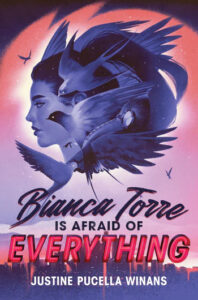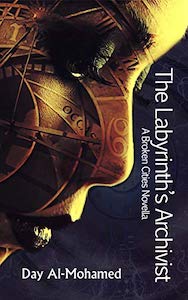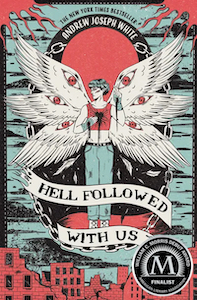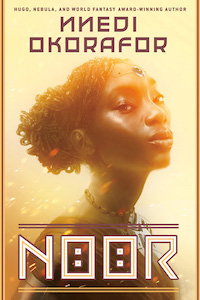“Bianca Torre Is Afraid of Everything” by Justine Pucella Winans
Sixteen-year-old Bianca Torre is an avid birder undergoing a gender identity crisis and grappling with an ever-growing list of fears. Some, like Fear #6: Initiating Conversation, keep them constrained, forcing them to watch birds from the telescope in their bedroom. And, occasionally, their neighbors. When their gaze wanders from the birds to one particular window across the street, Bianca witnesses a creepy plague-masked murderer take their neighbor’s life. Worse, the death is ruled a suicide, forcing Bianca to make a choice—succumb to their long list of fears (including #3: Murder and #55: Breaking into a Dead Guy’s Apartment) or investigate what happened.
Bianca enlists the help of their friend Anderson Coleman, but the two have more knowledge of anime than true crime. As Bianca and Anderson dig deeper into the murder with a little help from Bianca’s crush and fellow birding aficionado, Elaine Yee (#13: Beautiful People, #11: Parents Discovering They’re A Raging Lesbian), the trio uncovers a conspiracy much larger—and weirder—than imagined. But when the killer catches wind of the investigation, Bianca’s #1 fear of public speaking doesn’t sound so bad compared to the threat of being silenced for good.
In this absurdist, bizarrely comical YA thriller that is at turns a deceptively deep exploration of anxiety and identity, perhaps the real murder investigation is the friends we make along the way.
Review
This was a fun read. The murder mystery was interesting but the way it was handled was a bit over ridiculous. However it being ridiculous was intentional given the description. Serious things would happen with only a brief mention from the adults and then the plot moved on… so the teenagers could solve the mystery. Which was fine but I ended up enjoying reading about Bianca’s character development more as they both figured out their gender identity (realizing they are non-binary) and also dealing with all their anxieties and fears. That was the more interesting part of the book for me. The characters are all great though I wish Bianca had been able to talk to their parents more, but that was realistic. At least they have their friend’s parents to rely on for that.
Warnings and additional reviews are available on the StoryGraph page for “Bianca Torre Is Afraid of Everything”.
Book Details

- Author’s Website
- Justine Pucella Winans
- Publisher / Date
- Clarion Books, April 2023
- Genre
- Mystery, Thriller, Young Adult
- Page Count
- 384
- Completion Date
- September 12, 2023




